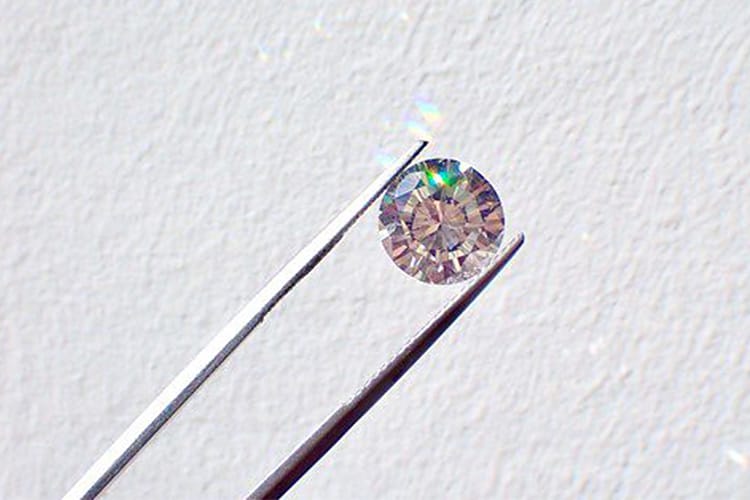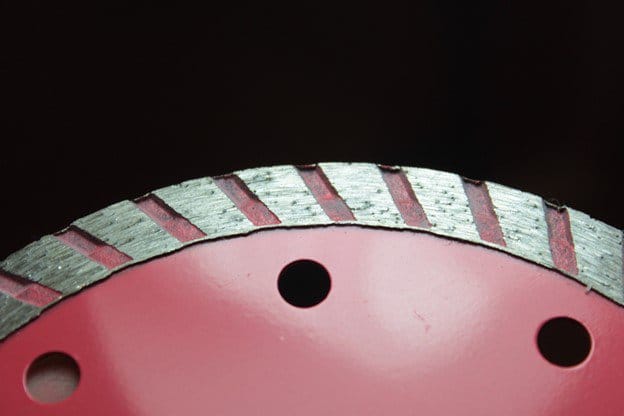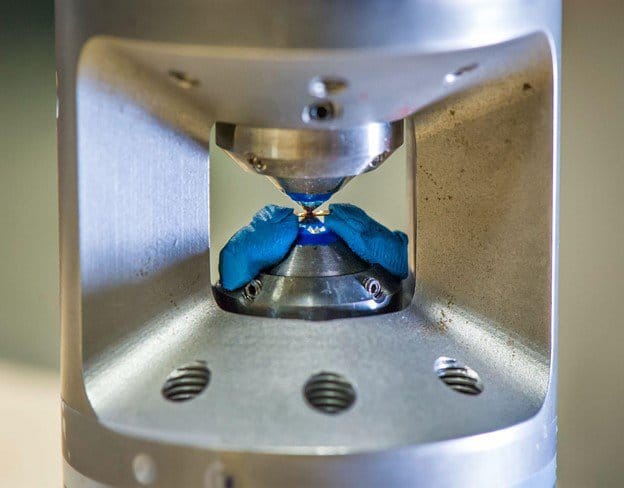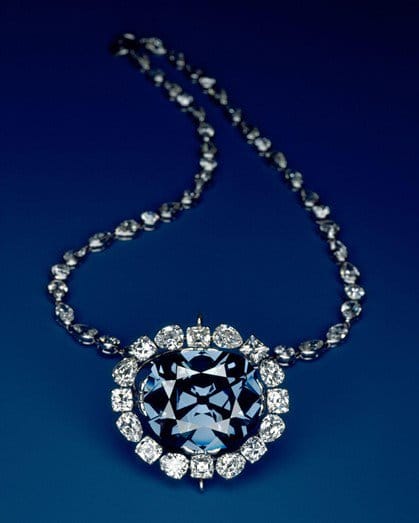Diamonds Beyond Jewelry

When it comes to diamonds, jewelry seems to get all the attention. But, carats aside, this simple mineral is full of hidden talents.
“Diamond is a fascinating material,” said Jeffrey Post, mineralogist and curator-in-charge of gems and minerals at the Smithsonian National Museum of Natural History. “It’s got all kinds of applications because of its hardness.” And thanks to specialized lab techniques, he said, “It’s possible to fairly inexpensively and quickly grow large sheets of diamond, whatever you need to use them for.”
Here are five surprising uses that give the diamond its time to shine — and not on someone’s finger.
Cutting Tools
Diamond’s crystal structure — a bunch of carbon atoms locked together in a sturdy array — makes it the hardest known material on Earth or beyond. So when you’re trying to bore through something tough, like a slab of concrete, diamond is up to the task. “It can be embedded into all kinds of tools to add to their resistance and cutting ability,” Post said. Drill bits and the blades of saws are often fortified with tiny diamonds to make them less susceptible to wear and tear.

Diamond-embedded blades like this one are a good match for concrete and other strong materials. Emilian Robert Vicol
Because diamond is so hard, it’s also used as an abrasive; think sandpaper, but stronger. “When we polish specimens for some of the research that we do, we’re using diamond paste,” Post said. Yes, that means diamonds are polished with other diamonds.
Medical Devices
Diamond’s durability also comes in handy for delicate work. “You can hone it, and it’ll keep that shape because it doesn’t wear,” Post said. The bit of a dental drill, for instance, can be diamond-encrusted so that dentists can precisely target tooth decay without dulling the end.
Another one of Diamond’s superpowers is that it keeps to itself, chemically speaking. “It’s very inert,” Post said, “so if you’re trying to protect the surface of something from reaction, a diamond coating is a really good way to do it.” That makes it a good candidate for use in medical procedures, where unintended reactions can be dangerous.
Similarly, diamonds have been found to play nicely with the human immune system. It’s unlikely to trigger a protective attack when it’s introduced into the body. Thanks to biocompatibility, research suggests diamond is a promising material when it comes to prostheses and other medical implants.
Scientific Instruments
Such an inert material also comes in handy for coating scientific tools, since you don’t want pesky chemical reactions interfering with what you’re trying to study. But Post pointed out that diamonds can make a researcher’s life easier in other ways, too. “Diamond is transparent to most of the electromagnetic spectrum,” including most infrared, ultraviolet, and visible light, he said.
In many kinds of experiments, a scientist might want to hit a small sample of the material with a laser beam and capture the byproduct to analyze it. Enclose that sample behind a diamond window, and you’ve created a confined space that the laser can go right through.
In some labs, you might also find a diamond anvil cell — an instrument that squeezes a sample between the pointy ends of two diamonds. “You can achieve extremely high pressures that way,” Post said. “If you’re trying to understand what’s going on very deep in the Earth, this becomes the essential tool for doing that.”

Diamond anvil cells, like this one housed at the Lawrence Berkeley National Laboratory, use the diamond’s remarkable strength to exert enormous pressure on a sample. Roy Kaltschmidt, © The Regents of the University of California, Lawrence Berkeley National Laboratory
Computing
Their ability to mercilessly crush things isn’t the only reason researchers are excited about diamonds. “One of the areas where diamond has become very interesting, and is still very much in the development phase, is electronics,” Post said. That’s because a diamond containing certain impurities in its structure behaves as a semiconductor, a material whose ability to conduct electricity can be manipulated.
Semiconducting materials are crucial for the manufacturing of smartphones, computers, and many other devices. Some believe that diamond-based components could fuel a leap forward in quantum computing, making these ultra-fast machines more compact and heat-tolerant.
“Diamond is one of the best conductors of heat,” Post said. “You can put a lot of tiny little components into a diamond computer, without worrying about heat generation like you do with silicon-based electronics.”
Planetary Research
As useful as diamonds are in day-to-day life, they also provide a key to a far more mysterious world: the deep interior of the planet. The journey a natural diamond takes to get to us is long. It’s forged in the Earth’s upper mantle, roughly 100 miles down, and eventually makes its way to the surface during a volcanic eruption. The entire process can take billions of years.

Post and his colleagues have analyzed the Hope Diamond, part of the Smithsonian collection and one of the most famous gems in the world, to determine how much boron it contains. Studying impurities like boron, which gives diamonds a blue tint, can help reveal the kinds of conditions in which the mineral formed. Chip Clark, Smithsonian Institution
Thanks to their incredible sturdiness, diamonds can survive this turbulent trek with very little disturbance to their chemical structures. “Whatever’s trapped in them stays trapped in them,” Post said. “They’re these beautiful little capsules that carry things from deep in the Earth to the surface so that we can actually study them.” The particles that get lodged in a diamond’s structure are relics of the environment in which the crystal formed, so inspecting them can help scientists understand what that deep, ancient layer of the planet might have been like.
“We know so little about the exact conditions — the soup, basically — from which these diamonds formed,” Post said. “They give us a glimpse into the chemistry, into the story, of a part of the Earth where we can’t hope to go.”
Source: Madison Goldberg, Smithsonian National Museum of Natural History. Top image: Shimmery gemstones might steal the spotlight, but diamonds boast plenty of properties that make them indispensable in all kinds of industries. Tahlia Doyle.